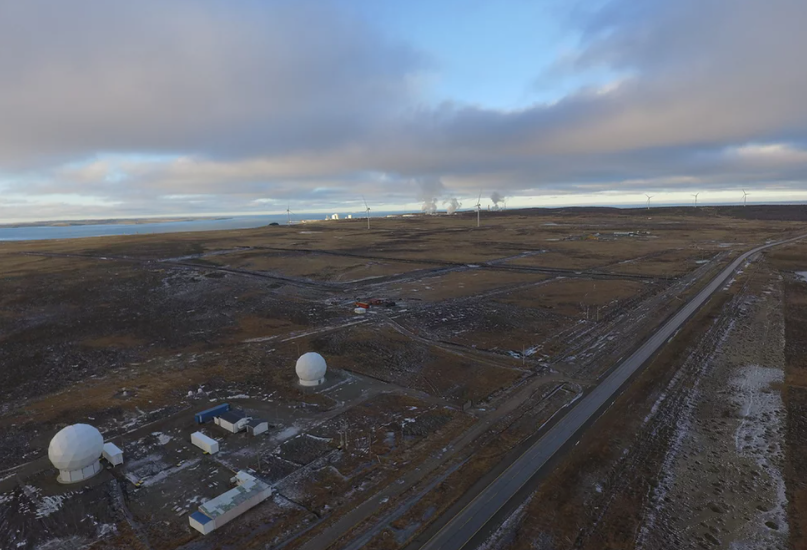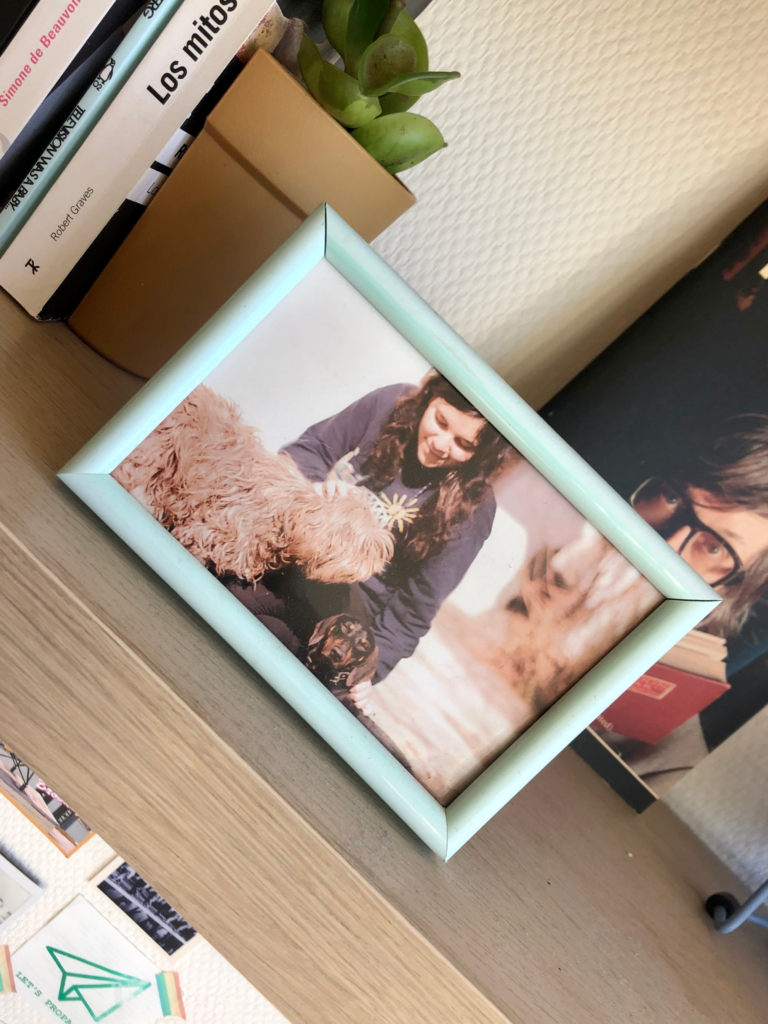Querida Danae,
In a world without a pandemic, in a different world, one of my possibilities – or rather fantasies – was to spend my summer weeks in Aysen, a region of Chilean Patagonia. I’ve never been there, of course, and all my references are based on “The seamstress and the wind,” by Aira, in an edition that came with her story “How I became a nun” <3 and that I read as a very young woman. Of course, I do not remember the stories. Still, I do recall the circumstances in which I read it, resting after having eaten a fresh fish for lunch, in a sort of collective dining room in a hamlet between Puerto Viejo and Playa Virgen, on the coast of the Atacama desert, living an eternal summer, one of those so frequent when you’re at your early twenties. Patagonia sounded like everything when you’re young: “If this is Patagonia, what am I?” says the protagonist of the short novel. I remember looking at the bright sea, fresh thanks to the mild Pacific breeze at those geographical heights, thinking what it would be like to be so far down in the world, alone, enclosed in a natural chest of windy blue lands and “the sky pink like the petal of a titanic flower “(boom!).
Patagonia must be one of those only places in the world that, due to its obvious geographical difficulties, continues to be considered “a no man’s land,” the space for human conquest over nature and the indigenous, the claim for the infinite extraction of natural resources. By the way, these lands have belonged to several, and it’s interesting to think about the continuity between the extermination of their indigenous peoples, the European settlers to whom the Chilean state-provided lands, in the minimal but critical oil presence for Chile in the zone, and, now, in the presence of green energies, Elon Musk and Jeff Bezos. Not even in the prolific imagination of César Aira, I think, would there be room for so much.
Cabo Negro is a section of pampas a few kilometers north of Punta Arenas, in Chilean Patagonia. It must be the space of extractivism of the past and the future like a 19th-century factory looking at space conquest. It must be an extraordinary place to see, a map for the humans of the future to study how the climate crisis played out, I guess. We should plan a trip there soon, but in the meantime, here’s a pic of the Patagonian Martian scenery of Cabo Negro.

At first, Cabo Negro only housed the oil company ENAP (the energy matrix in the area is dominated by oil and gas) and Methanex Corporation (a company – obviously, Canadian – that extracts, distributes, and markets methanol). Extractivism 1.0, let’s say. Then, in one of those movements that so elegantly play out oil companies, ENAP partnered with Pecket Energyto install a small wind farm in Cabo Negro that injects 10.3 MW into Punta Arenas’ electricity reaching some 15 thousand homes in the region. Stepping up to the (bit fanciful) trend of green hydrogen, now Enel (ahh, that former multinational company of the Italian state that produces and distributes electricity and gas) announced installing a pilot plant to produce green hydrogen through a wind-powered electrolyzer in Cabo Negro. Extractivism 2.0, to name it.
As you told me in your previous letter, Elon Musk not only announced terrestrial satellite stations in Puerto Montt for his Starlink project (which wants to provide high-speed internet -for the personal data extractivism- through a train of satellites that are orbiting in space) as it will also install one in Cabo Negro! In addition to Musk, Amazon Web Services (AWS) purchased lands in Cabo Negro to install a terrestrial satellite station to complement its AWS Ground Station project, which is a cloud-based system to control satellites and download satellite data to cope with the growing flood of data for geospatial applications, ranging from weather to maritime traffic, urban planning, crop assessment, and disaster response. Extractivism 3.0, the future.
Relating to this, recently, I was reading a very alarming piece about Big Tech’s growing interest in big data in agriculture. These data troves allow conquering a new market to secure a new information monopoly that, as adverse effects, liquidates small farmers and is also an extremely risky bet for the climate emergency by reducing the number of players and crops.
Ayayay de nosotras, d. At this point, I’m just thinking: can we even think about mitigating the climate crisis with the healthy presence of the super-rich in the world?
I’ll see you in Patagonia, d.
Adores you,
p.
Amiga Paz,
What are we going to do with this sadness? We have already talked about how gatito was some type of digital Noah’s ark in which we show to each other plenty of things that we suspect they might not be around for so long. While I was preparing this letter, I felt like I was in the midst of a litany compiling all this new information on the environmental damage of our digital consumption: the environmental cost of the exaggerated manufacturing of iPhones, knowing that a Google search uses as much energy as cooking an egg or boiling water in an electric kettle and that yearly emails for work (and not accounting for spam) have been calculated to be equal in terms of CO2 emissions to driving 320 kilometers, the worrying trajectory of the global energy consumption of the tech industry, Tesla investing billions in bitcoin the filthiest of all cryptocurrencies the awful news you share about Musk and Bezos soon to be destroying the south of Chile. All this is like being the witness of how problems increase in terms of magnitude and then we’re reaching a state of pure helplessness. For instance, I checked how much carbon we used for our gato.earth website and we got good results because we use a green energy sourced hosting. Is everything alright then? What are we going to do with this sadness?
In the end I can only say that I love when you send me photos, it is nice to acknowledge that at least there is one thing we can control: tell each other about our feelings. This was also one of my observations when I watched Storytelling for Earthly Survival, Fabrizio Terranova’s documentary on Donna Haraway: that moment when you’re finally recognizing the ineffable, a sentiment one has when looking at a beautiful landscape or when forming a relation of companionship with a non-human animal, which is the case of Haraway with her dog (and research associate) Cayenne, and also the case of her husband whom I found so cool when he was recording and organizing sounds made by birds.
I hope I’m not sounding too defeating, on the contrary, I like invoking these posthuman emotions if they’re meaningful for the promotion of new scientific and spiritual frameworks that will help us to face this climate emergency. In this sense, I think it could be useful to analyze information such as this study that states that dolphins have similar personality traits to humans, or this research about scientists who discovered that it was possible to store data in the DNA of bacteria, the first message they coded said “Hello world”.
So yes, I want to go to Patagonia with you, look at the sky and say “hello world”, of course that is the kind of thing I miss the most after these winter months of lockdown: visit nature, pet a cat, watch the birds fly. Say hello to the world.
Some weeks ago, Chasquita passed away, she was very old so everything happened very naturally. I probably told you about her because she used to live with Javi in Santiago and, with Benito, was extremely important to us. Obviously we were very sad with this news but at some point, with Javi, we concluded that Chasquita and Benito were some type of masters for us, that during all these years of inter-species love they taught us important things about the understanding of this life which is so strange but at the same time so awesome. That is exactly the relation I’m proposing we should have with the non-human: giant universes from which there is so much to learn 🙂
Un beso,
Danae
